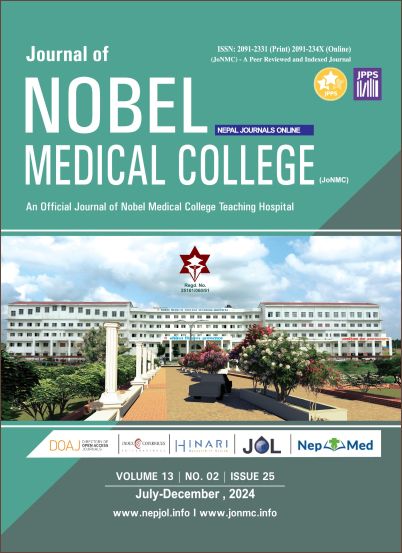Recurrent Hemorrhagic Stroke in Bilateral Basal Ganglia: A Comprehensive Case Report of Sequential Events
DOI:
https://doi.org/10.3126/jonmc.v13i2.75245Keywords:
Basal ganglia, Hypertension, Intracerebral hemorrhage, Recurrent strokeAbstract
Hemorrhagic strokes typically occur unilaterally, often in individuals with a history of hypertension. Bilateral recurrent hemorrhagic strokes are exceedingly rare and present significant clinical challenges in patient management. This case report discusses a patient with recurrent hemorrhagic strokes in the bilateral basal ganglia, detailing the clinical course and management strategies. A 58-year-old male with a five-year history of hypertension presented with complaints of a headache lasting three days and generalized weakness accompanied by difficulty walking due to right-sided hemiparesis. Imaging revealed a left basal ganglia bleed. Within a year, he experienced a similar episode with left-sided hemiplegia, and imaging confirmed a new hemorrhage in the right basal ganglia. Recurrent hemorrhagic stroke underscores the necessity for effective blood pressure control through antihypertensive medications and lifestyle modifications, as well as vigilant patient monitoring to mitigate the future risk of such events, ensuring long-term prognosis and quality of life. In brief, this study examines a particular medical case involving recurrent hemorrhagic strokes in both sides of the brain's basal ganglia. It provides a thorough analysis of the sequence of these hemorrhagic events, detailing their characteristics and exploring the possible underlying causes and treatment strategies.
Downloads
Downloads
Published
How to Cite
Issue
Section
License
Copyright (c) 2024 The Author(s)

This work is licensed under a Creative Commons Attribution 4.0 International License.
JoNMC applies the Creative Commons Attribution (CC BY) license to works we publish. Under this license, authors retain ownership of the copyright for their content, but they allow anyone to download, reuse, reprint, modify, distribute and/or copy the content as long as the original authors and source are cited.




